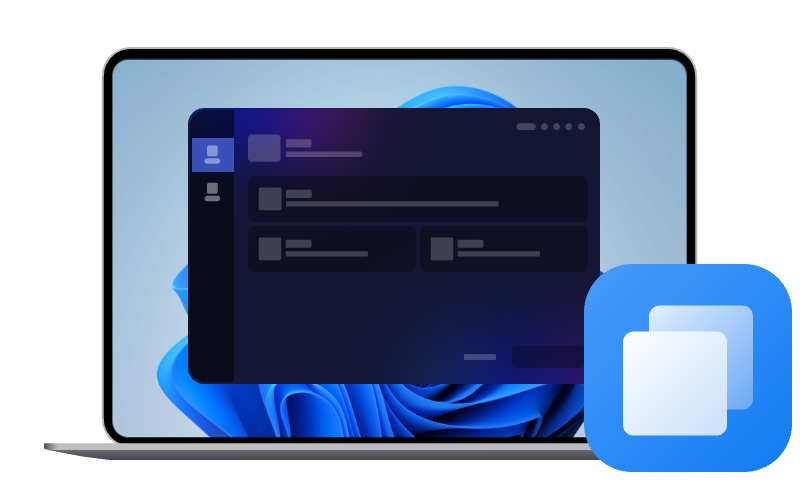How to Clone Hard Drive Using Command Prompt
In this article, we’ll explore three ways to clone a hard drive using Command Prompt—Xcopy, Robocopy, and Diskpart—along with their limitations. We’ll also introduce a more efficient alternative for seamless disk cloning.
Cloning a hard drive is a crucial task, especially when upgrading to a larger hard drive or creating a backup. While there are many third-party tools available for cloning hard drives, did you know that you can clone a hard drive using the Command Prompt?
Using built-in Windows utilities like Xcopy, Robocopy, and Diskpart, users can clone their hard drives with relative ease. In this article, we’ll explore these methods, their limitations, and alternative ways to clone a hard drive when the Command Prompt might not meet your needs.
How to Clone Hard Drive via Command Prompt
Cloning a hard drive essentially means making an exact copy of it, including all files, folders, and the system partition. Using the Command Prompt offers a powerful and flexible way to copy data, but it requires technical knowledge to execute successfully. Let’s explore three common methods for cloning a hard drive via Command Prompt.
Method 1: Using Xcopy (File-Based Copy)
Xcopy is a command-line tool that allows users to copy files and directories from one location to another. While it's not a true "disk clone" tool, it can help you copy files from one hard drive to another. This method is ideal for situations where you want to clone only the data (files and folders) without dealing with partitions or bootable drives.
Steps to Clone Hard Drive Using Xcopy:
Step 1. Open the Command Prompt in administrator mode by typing cmd in the search bar, right-clicking on it, and selecting Run as Administrator.
Step 2. Type the following command to copy all files from the source drive (e.g., C:) to the target drive (e.g., D:):
xcopy C:\ D:\ /s /e /h /c /y
Notes:
- /s copies directories and subdirectories.
- /e copies empty directories.
- /h copies hidden and system files.
- /c continues copying even if errors occur.
- /y suppresses confirmation to overwrite files.
Step 3. Press Enter to execute the command.
✅Pros:
|
❌Cons:
|
Method 2: Using Robocopy (Advanced File Copy)
Robocopy, short for "Robust Copy," is a more advanced version of Xcopy. It’s designed for more reliable and efficient copying of files, especially large files or directories. Robocopy can handle more complex scenarios, such as copying file attributes, timestamps, and permissions.
Steps for Cloning with Robocopy:
Step 1. Open Command Prompt as an administrator.
Step 2. Use the following command to clone your hard drive:
robocopy C:\ D:\ /MIR /ZB /R:5 /W:5
Notes:
- /MIR mirrors the source directory to the destination.
- /ZB uses restartable mode in case of network interruptions or errors.
- /R:5 sets the number of retries in case of failure.
- /W:5 defines the wait time between retries.
Step 3. Hit Enter to start the cloning process.
✅Pros:
|
❌Cons:
|
Method 3: Using Diskpart (Partition Copy)
Diskpart is a powerful tool for managing disk partitions and performing system-level disk operations. While it's not intended for cloning data directly, you can use it to create an exact copy of your hard drive by duplicating the partitions.
Steps for Cloning with Diskpart:
Step 1. Open Command Prompt as an administrator.
Step 2. Type diskpart and press Enter to enter the disk partitioning tool.
Step 3. Use the following commands to select the source disk and clone it to the target disk:
- list disk
- select disk 1 (select the source disk)
- clean (this will wipe the source disk, so be cautious)
- list partition
- select partition 1 (select the partition you want to clone)
You can then create a new partition on the target disk and copy data from the source disk.
✅Pros:
|
❌Cons:
|
Limitations of Command Prompt Cloning
While the above methods provide ways to clone data or partitions using the Command Prompt, they have some notable limitations:
- No Bootable Cloning: These methods don’t create a bootable copy of the drive. If you’re looking to migrate an operating system and bootable partitions to a new drive, you’ll need a third-party tool that supports bootable cloning.
- No Direct Disk-to-Disk Cloning: Tools like Xcopy and Robocopy clone files, not whole disks. For a complete clone, you’d have to use more advanced tools.
- Data-Only Copy: For those who need to preserve data integrity, file attributes, and partitions, these methods may not be sufficient.
- Error-Prone: These methods can be difficult to use, especially for beginners. Incorrect commands or use of the wrong options may result in data loss.
Clone Hard Drive via Command Prompt Alternative
If Command Prompt’s limitations are a concern, you might want to consider alternatives for cloning a hard drive. One such alternative is AOMEI Cloner. It is an intuitive software that offers full disk cloning capabilities, including the ability to clone an entire drive, create a bootable copy, and even migrate your OS to a new hard drive. It also supports SSD migrations, making it ideal for upgrading to faster storage.
Steps for Cloning a Hard Drive with AOMEI Cloner:
Step 1. Install AOMEI Cloner on your PC and open the software to select Clone from the main menu.
Step 2. Choose Disk Clone to clone an entire disk or System Clone to clone just the operating system.
Step 3. Select the source and destination disks.
Step 4. Click Start Clone.
✅Pros:
|
❌Cons:
|
Conclusion
Cloning a hard drive using Command Prompt on Windows 11/10 can be done with utilities like Xcopy, Robocopy, and Diskpart, though each has its limitations. While these methods are excellent for copying files and basic partition management, they don’t offer the full functionality that third-party cloning software can provide.
For users who require a more seamless, bootable clone of their system, a dedicated cloning tool like AOMEI Cloner is a better choice.
FAQs About Cloning Drive Using CMD
1. Can I clone a bootable drive using Command Prompt?
No, the methods provided by Command Prompt, such as Xcopy, Robocopy, and Diskpart, do not support cloning bootable drives. To clone a bootable system or operating system, you’ll need a specialized cloning tool like AOMEI Cloner.
2. Is it safe to clone a hard drive with Command Prompt?
Yes, cloning via Command Prompt is safe, but it requires precision. If commands are entered incorrectly, there’s a risk of data loss or drive corruption. It’s crucial to understand the commands and use them carefully.
3. Can I clone a hard drive to an SSD using Command Prompt?
While you can copy data to an SSD using Command Prompt, it won’t optimize the SSD for performance or make it bootable. To clone an HDD to an SSD with full compatibility, a cloning tool like AOMEI Cloner is the better option.
4. What is the best tool for cloning a hard drive in Windows?
For a reliable and user-friendly experience, AOMEI Cloner is highly recommended. It supports full disk cloning, including system partitions and bootable drives, making it the ideal tool for upgrading to a new hard drive or SSD.
5. Can I clone a hard drive to a smaller one using Command Prompt?
Cloning a larger hard drive to a smaller one via Command Prompt can be challenging. Tools like Robocopy and Xcopy only copy files and don't account for partition sizes or formatting. For this task, third-party software that supports resizing partitions during the clone process is more efficient.

